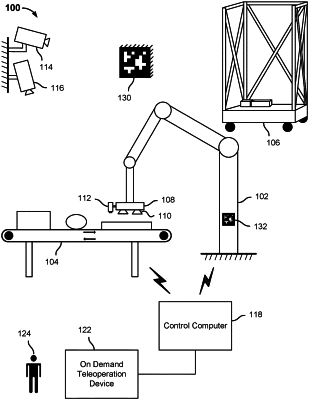| CPC G06T 1/0014 (2013.01) [G06T 1/20 (2013.01); G06T 7/174 (2017.01); G06T 7/593 (2017.01); G06T 7/90 (2017.01); G06T 2207/10024 (2013.01); G06T 2207/10028 (2013.01); G06T 2207/20221 (2013.01); H04N 13/204 (2018.05)] | 22 Claims |

|
1. A system, comprising:
a communication interface configured to receive image data from each of a plurality of cameras associated with a workspace; and
a processor coupled to the communication interface and configured to:
merge image data from the plurality of cameras to generate a merged point cloud data;
perform segmentation based on visual image data from a subset of the plurality of cameras to generate a segmentation result, wherein the segmentation result includes an indication of an object boundary for one or more objects;
use the merged point cloud data and the segmentation result to generate a merged three dimensional and segmented view of the workspace, including by:
for at least a subset of the plurality of cameras, generating a point cloud for each object and computing a corresponding centroid; and
segmenting objects within the workspace based at least in part on centroids of corresponding to each object; and
provide the merged three dimensional and segmented view of the workspace as an output to a module configured to determine a strategy to grasp an object present in the workspace using a robot.
|